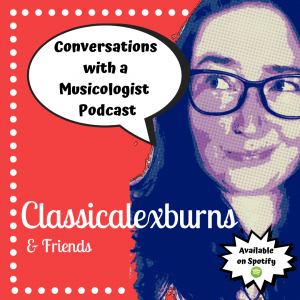Our Speaker this week was a freelance musical marketing professional, journalist, teacher and trumpeter. She was much involved with local brass bands and in the wider Sheffield musical scene. Alex was to give our senses a treat, giving a precise presentation of her subject spiced by an accompaniment of musical clips and visuals.
Alex commenced her talk by defining what is understood about Chamber Music. It was a form of classical music composed for a small group of instruments-traditionally played by a group that could fit, typically, into a palace chamber or in private houses as “the music of friends”. During the Middle Ages and early Renaissance (up to about 1600) instruments were used primarily as an accompaniment to singers.
Our speaker continued by tracing the development of this style of music from the Baroque period (1600-1750) to modern times. She noted the contributions of major composers such as Bach (1685-1750) to Shostakovich (1906-1975). Joseph Haydn (1732-1809) was generally credited with creating the modern form of chamber music as we know it. His many works were to establish the conversational style of composition and form that was to dominate over the next two centuries. But it was Mozart (1756-1791) who was to help seal its popularity with his prolific output of masterpieces such as his six quartets.
During this musical journey we paused to listen to around ten samples from the masters. These included Haydn’s piece for string quartet Op 76 ‘Emperor’, Bach’s ‘Art of Fugue’ and Schubert’s ‘Trout’ composed in 1819. The latter was an unusual piece for the time being written for the piano, violin, viola, cello and double bass.
Throughout the 18th Century, a composer was normally an employee of a king or aristocrat and worked for the pleasure of their court or household. Haydn, for example, was an employee of Nikolaus 1. The turn of the 19th Century saw dramatic changes in society and in music technology which had far reaching effects on the way chamber music was composed and played. With the decline of the aristocracy, its patronage and the rise of new social orders throughout Europe, composers increasingly had to make money by selling their compositions and performing concerts. Moving ‘from ‘home to hall’ they often gave subscription concerts or ‘recitals’, renting a venue and taking receipts. Increasingly, they wrote chamber music not only for rich patrons, but for professional musicians playing for a paying audience.
It was Johannes Brahm’s (1833-1897) music which provided a bridge between the classical to the modern, expanding the structure and harmonic vocabulary of chamber music. A good example was his second string sextet Op.36. As we moved into the 20th Century, composers began to introduce an element of ‘nationalism’ into their work. Dvorak (1841-1904 ) for example, drew on both the folk music of his native Bohemia as well the emerging American style and thus challenging the traditional genre.
Our speaker then moved on to explain how technical changes, including the availability of new raw materials, had influenced the production and range of instruments and in turn, the musical possibilities. After 1700, the Harpsicord gradually fell out of favour giving way to the pianoforte. (Its iron frames allowing greater robustness and offering a wider range of tone due to the higher tensions now possible). List and Chopin were to devote most of their works to the instrument. Changes also applied to the whole range of string and woodwind instruments such as the violin, cello, flute and clarinet (new woods, the introduction of thicker metal replacing gut strings). Other developments included the introduction of the ‘chin rest’. Ergonomics is not a new science! Such changes were not always welcome and led to disagreements in musical groups over such matters as style and presentation. The greater volumes now possible allowed Chamber music to move over the years from ‘music with friends’ in the front parlour to the concert hall and now back again into typically small auditoria. In Alex’s view, Chamber music did not lend itself well to modern amphlification.
While the rise of popularity in symphonic and virtuoso music continues, Alex thought Chamber Music will always have a place among those who play an instrument and like to enjoy music among friends. And we should not forget the silent audience who listen via digital media.
Alex concluded her most entertaining session by inviting questions and comments from members. These included the future of music in Sheffield schools, the whereabouts of the Lindsey String Quartet, the apparent lack of English and women composers, the best musical festivals , the must hear’ ten pieces to listen to, (see separate post) and several more. All this revealed a number of active musicians in the audience. Our venue is a small auditorium. Perhaps they could get together and give us a treat?


